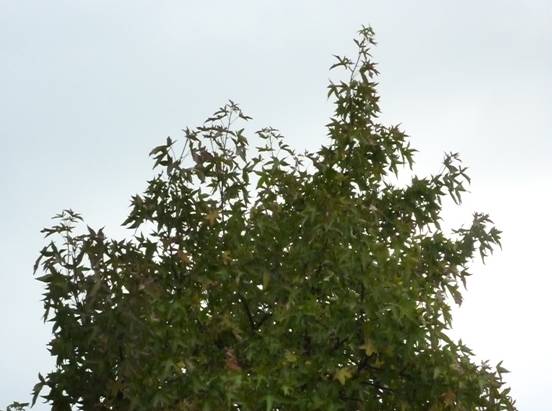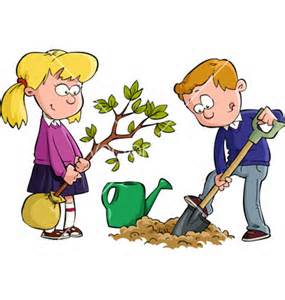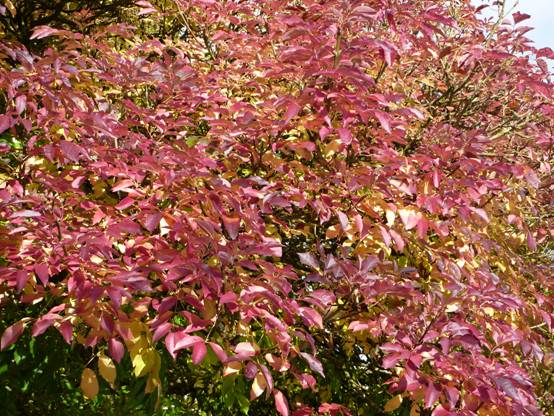
Salty Sam’s Fun Blog for Children
Post Number 66
Planting Trees
Hello Everyone

Last week l was telling you about how incredible and useful trees can be.
Planting a tree is a really nice thing to do, but if you want to plant one make sure you know how big it is going to grow before hand.
Don’t plant a tree in a place where there won’t be room for it in a few years. Remember the roots stretch under the ground for as far as the canopy stretches overhead and roots can damage the foundations of a building or block a drain.
You might need to ask permission as well, if it is not your land.
Some trees are better at supporting wildlife than others. The best one for giving animals and insects a home is the oak but hornbeams, alders, hawthorns and rowans are good as well.
Different trees do well in different places and on different soils, so it is good to do research before you make choices. Make sure you plan ahead.
The cheapest way to grow trees is to sow the seeds yourself. You can collect seeds in the autumn.
With some species of trees you get male trees and female trees but with some species each tree is male and female together.
Sometimes tree seeds like to be left out in the cold all winter, and then they will start growing when the warmer weather comes in the spring.
The warmth following the cold will trigger growth and cause the seeds to sprout.
lf you buy a tree in a pot, dig a hole in the ground to put it in first, then take the tree out of the pot. Make sure that the hole is nice and wide because you want to encourage the roots to grow outwards in order to secure the tree well in the ground.
Gently pull some of the roots out from the root ball to encourage them to start growing outwards. Put the tree into the hole and push the soil in around the tree firmly. Make sure the soil goes up to the same level that it was at in the pot.
There is no need to add manure into the hole, and if you can leave the soil in a little cone-shaped slope around the base of the trunk, all the better. Then the rain water will run away from the trunk and towards the roots around it.
Put a stake by the side and tie the tree to it using a rubber tie (or a piece of tights/panty hose). lt is important that there is a piece of rubber between the tree and the stake so that the tree does not rub against the stake when it is windy and start losing its bark.
(lf the tree is really short and/or sheltered in the corner of a garden, you will probably not even need a stake.)
Then give the tree a nice drink. You can even plant a little pipe in the ground next to the tree which will allow you to pour water straight down to the roots quite easily. Or you could make your own out of a plastic bottle with the bottom removed (ask an adult if they can do this job for you).
Take the stake away after 2 years.
lf you want to plant a lot of little trees (about 30cm/1 foot high), there is a really quick way of doing it and in no time you will have a mini wood.
Cut a ‘T’ shape into the earth and as you make the top of the ‘T’ lift the earth up with your spade. This will create a raised slit. Pop the little tree into the slit and let your spade go into an upright position again. The tree will be lowered into the ground and be planted!
Then exercise your ‘gardener’s boot’ around the tree – firming the earth in around it. The tree will need soil around its roots – with no air pockets.
Give it a drink if you can, but if you are planting a whole wood in late autumn, there might be a rain shower soon afterwards that will do the job for you. November is a good time to plant trees and also February, but don’t do it if the ground is frozen hard.
lf you plant fruit trees, then the birds and the wasps will want to share the harvest with you, so make sure they don’t get to the fruit before you do!
Bye bye everyone – don’t forget to subscribe to my blog!
Love and kisses
Salty Sam

www.christina-sinclair.com

Bill and Bob’s Joke of the Week![]()
![]()
Bob: Knock! Knock!
Bill: Who’s there?
Bob: Theresa.
Bill: Theresa who?
Bob: Theresa Green!

Salty Sam © Christina Sinclair 2015
Unauthorized use and/or duplication of material from this blog without express and written permission from this blog’s author and owner is strictly prohibited.
Links may be used to www.christina-sinclair.com

Picture Gallery

Hornbeams have very distinctive seed cases

Hornbeams have a very distinctive shape

Only female ash trees produce keys (seeds)

This is how they start out in the spring

A male sweet gum tree with autumn leaves

Female sweet gum tree

Sweet gum tree seeds on the female tree

An alder tree in the spring

An alder’s cones and catkins

An alder tree has catkins and cones on the same tree
(The catkins are the male part and the cones are the female part)

A rowan tree with red berries – they can also be white or pink
(Also called a mountain ash)  If a tree comes with its roots wrapped in sacking, it is called a ‘bare root tree’
If a tree comes with its roots wrapped in sacking, it is called a ‘bare root tree’
It is important that the roots are not left in the air to dry out at all

A tree needs staking (unless it is very short or in a very sheltered position) and watering
The stake should not be too high because it will be good for the top of the tree to rock about in the wind – but not the base

It is important to plant trees when they are dormant – that means at a time when the branches are bare
(but not when the ground is frozen) so in late autumn or early spring

Trees can also be grown from seeds collected in the autumn – if you have the patience to wait for them to grow
(rowan)
 Maple seeds
Maple seeds

A plastic water tube will help get water to a tree’s roots quickly
(a monkey puzzle tree)

Trees are beautiful at every time of the year

You must know how big a tree is going to grow before you plant it

Not only the height but the width as well

They give colour in the autumn too

Some have really brilliant-coloured leaves (sumach)

Some trees are really tiny and can fit into the smallest of gardens (like a dwarf acer)

Or this willow-leaved pear tree

Kilmarnock willows always remain small

When your trees create shade there are always flowers that can be planted underneath them like these cyclamen

Trees are the biggest plants on the planet

 THE SALTY SAM NEWS DESK
THE SALTY SAM NEWS DESK

Quite some time ago, there was a terrible thunderstorm in Rocky Bay and an old tree at the front of the Rocky Bay Primary School was hit by lightning.
Luckily, all the children were safely tucked up in bed at the time.
There was a terrible mess to clear up, but Miss Pringle, Bill and Bob’s teacher, said that it had given her an idea.

As it was autumn at the time, she decided that the children should all bring in tree seeds of their choice to be planted in a small pot or margarine tub and any trees that germinated and grew could be planted at the edge of the school playing field.
These trees in years to come would create shade on hot, summer days.
She said it could be the class’s legacy for future generations.
Bill, Bob and their best friend Henry thought it was a great idea because they thought it would make them famous in their school.

Henry looking for tree seeds
Each child brought in three seeds that they had collected in their garden or in the park in a small plastic bag with their name on it, and Miss Pringle took the bags home to put in her fridge.
She explained that she wanted to keep them cool and fresh but not frozen over the winter. Then they would be ready for sowing the following spring.

So one Friday afternoon this spring, the children had a seed sowing lesson and put all their pots on the window sill.
Each pot had a name on it and gradually over the days the children made sure that the compost was kept slightly damp.
And in the warmth of the classroom magic things began to happen!
Lots of little trees began sprouting.

But unfortunately, Bob’s seeds didn’t sprout and he was very upset. In fact, this had happened to a couple of other children as well.
When I heard about this tragedy, I had a brilliant idea.
I thought of a ‘plan B’.
I took Bill, Bob and Henry into the woods behind Auntie Alice’s cottage and we all searched for tiny saplings that had sprouted that season.

The boys went searching in the woods
We found an oak, a holly and a maple. They were easy to recognize by the shape of their leaves. They may have been planted by a bird, a squirrel or the wind, we don’t know, but there was a tree each for the children who didn’t already have one.

We found a tiny holly tree growing in the woods
Of course the tiny trees grew and grew until they were too big for their pots. So Miss Pringle said that the children should take their trees home to repot and look after and then this coming winter she will invite the parents to come and help in a tree planting day and make an occasion of it.
And so this summer Bill and Bob and Henry will have to look after their trees well, and make sure they get sunshine and water, and by the time winter comes they should be ready to plant around the school. ![]()
 A baby oak growing out of an acorn
A baby oak growing out of an acorn
*Remember you should get permission if you want to take plants from someone else’s land.

Many trees support wildlife


Me writing my blog

Please tell all your friends on and Twitter
about my blog.![]()
Thank You!

*********************
TO ADVERTISE ON THIS BLOG
PLEASE CONTACT:
christina.sinclair.ads@aol.co.uk
*********************


Recipe Spot
lf you have a lot of fruit from your garden, this is a really nice fruit fool recipe to use your fruit in.
Auntie Alice has an apple store in her garden where her Bramley apples can last up to five months, but most fruit has to be frozen or cooked to be stored. Sometimes when fruit has been frozen it is only good for juicing or cooking. You can stew it or make it into pies, but this recipe is easy to make and lovely to eat.
The fruit to use can be apples, rhubarb, strawberries, raspberries, gooseberries or any kind of currants – or a mixture.
Take 450g/1lb fruit
3 tablespoons water
75-175g/3-6ozes sugar (depending on how sweet the fruit is that you are using)
300ml/8fl oz double cream
- Wash the fruit and remove stalks, skin and any parts that you don’t want to eat (remember that rhubarb leaves are very poisonous)
- Cut into small pieces (if you are using a fruit like apples)
- Put the fruit in a saucepan with the water
- Heat gently on a very low heat until the fruit is soft, stir the fruit from time to time
- When the fruit has become a smooth pulp leave it to cool completely
- Then stir in some sugar, taste your mixture and add some more sugar if necessary
- Liquidize at this point, if your puree is too lumpy
- Next whip up the cream
- Add in the fruit pulp and fold together gently
- lf the colour is a bit dull, you could add a few drops of food colouring at this point to zing it up a bit
- Spoon into nice glasses or dishes and put in the fridge until your meal time
- Decorate just before serving with whole berries or nuts or sprinkles or sugar balls
(You could use cold, thick custard instead of cream if you wanted to)

BLOW MY FOGHORN!!!

PLUS
Salty Sam fans can join in with their comments and share them with children all over the world. You will need permission if you are not an adult.
Enter your e-mail address to subscribe to my blog and receive new Salty Sam Blog Posts for free by e-mail every week. Your address will be kept private and will not be shared with any third party.
Sign me up at the side bar



lt’s the Weekend!

HOW TO MAKE A POT LUCK TREE
Here’s an idea to start growing trees from scratch.
Put the largest pot you can find somewhere in the garden out of the way. Put some compost in it and throw any seeds that you find onto the surface of the compost and let nature do the rest.
If you see that any have sprouted, then transfer them into another pot once they are about 10cm tall. Then you can start growing them on.

These are seeds growing on a hornbeam
Hornbeam trees are good for wildlife
If you want to plant seeds that you collect from eating fruit, then only plant those that will stand the climate in your country, otherwise you will have to grow them indoors.

Fruit like apples, pears, greengages, cherries and plums are alright for a British climate.
If you sprout apple pips, then you might not get a tree that produces the variety of apple that you ate to get the pip. You could have a type of tree that nobody has grown before!
This is how the Bramley apple started when a little girl called Mary Ann Brailsford planted some pips in her garden.
Bramley apples are now the most popular cooking apple in England and Wales.

A garden seat in an orchard
TIP
If your pips start sprouting don’t get over-excited and over-water them because they will fall over and rot. It is important to keep them warm as well if you are growing them inside in the winter.
When they are about 15-20cm tall you can pot them up. That means putting them into their own plant pot. Always handle delicate seedlings by one of their leaves and never their stalk. If you damage a leaf, the plant will survive, but not if you accidentally cut the stalk with your nail.
Then of course one day they will be ready to plant up into the ground.

Please note that the material on this blog is for personal use only.
It is a copyright infringement and, therefore, illegal under international law to sell items made with these patterns.
Use of the toys and projects is at your own risk.
©Christina Sinclair Designs 2015
ANSWERS TO LAST WEEK’S WORDSEARCH
|
H |
O |
R |
S |
E |
C |
H |
E |
S |
T |
N |
U |
T |
|||
|
L |
A |
R |
C |
H |
|||||||||||
|
Y |
E |
W |
|||||||||||||
|
P |
T |
||||||||||||||
|
I |
H |
||||||||||||||
|
N |
O |
A |
K |
||||||||||||
|
C |
E |
D |
A |
R |
P |
A |
L |
M |
|||||||
|
N |
A |
||||||||||||||
|
P |
|||||||||||||||
|
L |
|||||||||||||||
|
B |
E |
E |
C |
H |




Great blog. I will tell my friends and bring you in more readers. They will love this site.
Thank you for collecting more readers Anne! More are always welcome! 🙂